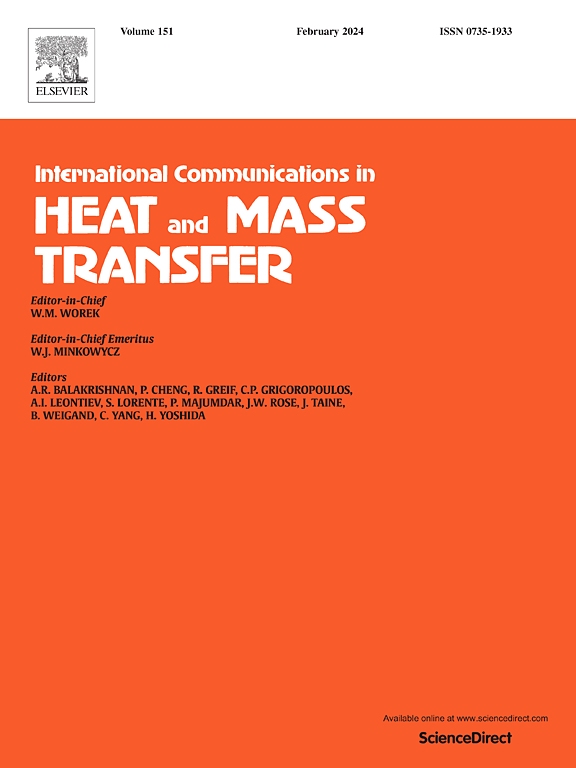Simulation and experiment of boiling two-phase flow and heat transfer in mini-channels with reticulated pore structure
IF 6.4
2区 工程技术
Q1 MECHANICS
International Communications in Heat and Mass Transfer
Pub Date : 2025-03-30
DOI:10.1016/j.icheatmasstransfer.2025.108899
引用次数: 0
Abstract
In order to satisfy the operational requirements of electronic devices with small volumes, high heat flow densities, and uniform temperatures, a reticulated pore mini-channel heat sink unit (porosity>72 %) is designed. The mechanism of efficient heat transfer by boiling phase change is studied with deionized water as the cooling medium. A two-phase flow model based on VOF theory is developed, and an experimental platform for testing the boiling two-phase flow and its heat transfer performance in millimeter-scale pore channels is built. The single-phase convective thermal performance and boiling two-phase flow status and heat transfer properties of the heat sink are obtained. The findings indicate that as flow velocity increases, the maximum increase of Nusselt number in two-phase flow can reach 77.2 % in contrast to that in single-phase flow, and maximum reduction in temperature difference across the heated surface can reach 20.1 %. The Nusselt number for the reticulated pore structure is 56.2 % higher than that of a straight mini-channel heat sink, and the heated surface experiences a maximum temperature drop of 3.42 K. Multiple sets of experimental and theoretical results under two-phase flow in pore mini-channels show good consistency. The maximum relative difference in error of the heated surface temperature is only 3.1 %, and the average relative difference in error of the total thermal resistance is 6.68 %. The research will offer significant theoretical and practical contributions to the design of high-efficiency heat sinks with pore mini-channel structure by the boiling phase transition mechanism.
求助全文
约1分钟内获得全文
求助全文
来源期刊
CiteScore
11.00
自引率
10.00%
发文量
648
审稿时长
32 days
期刊介绍:
International Communications in Heat and Mass Transfer serves as a world forum for the rapid dissemination of new ideas, new measurement techniques, preliminary findings of ongoing investigations, discussions, and criticisms in the field of heat and mass transfer. Two types of manuscript will be considered for publication: communications (short reports of new work or discussions of work which has already been published) and summaries (abstracts of reports, theses or manuscripts which are too long for publication in full). Together with its companion publication, International Journal of Heat and Mass Transfer, with which it shares the same Board of Editors, this journal is read by research workers and engineers throughout the world.

 求助内容:
求助内容: 应助结果提醒方式:
应助结果提醒方式:


